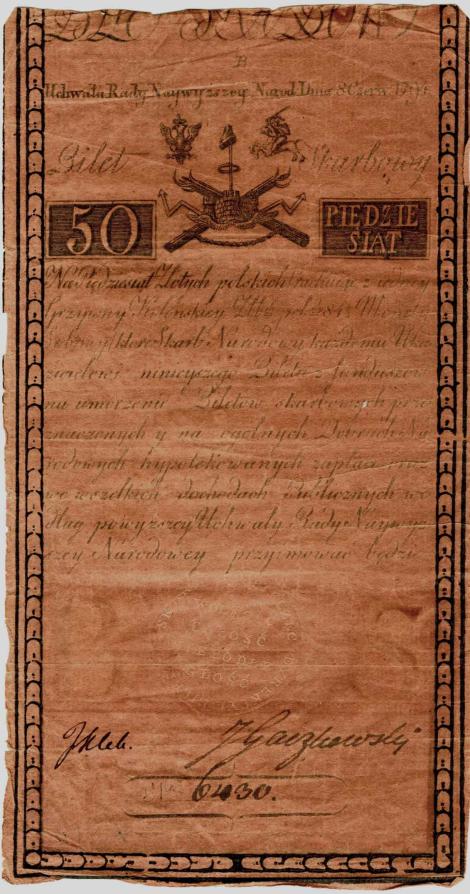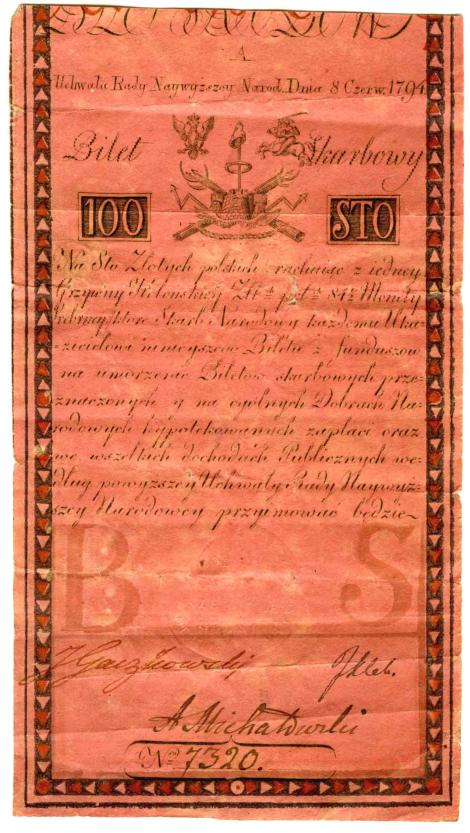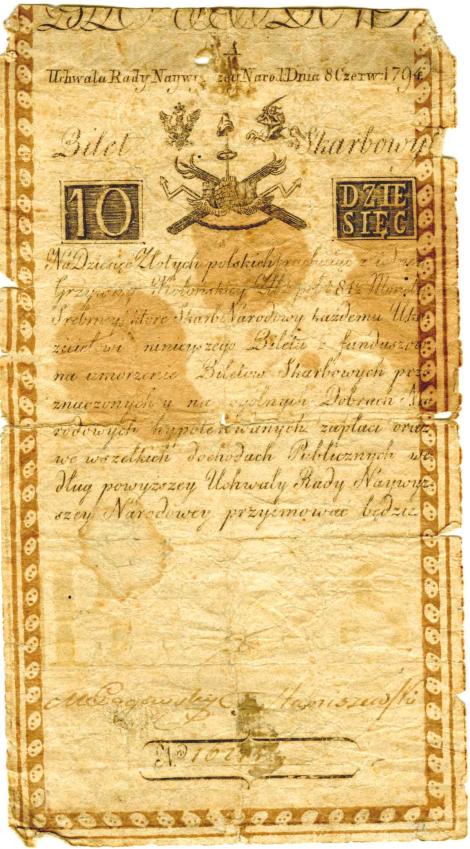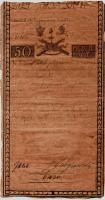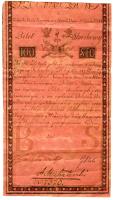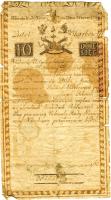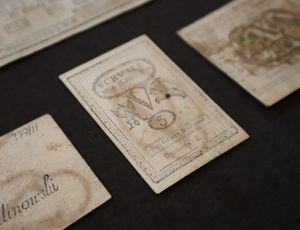
Exhibit of the Month is a series initiated by the Jagiellonian University Museum with the beginning of the new academic year. Each month we will explain the Museum collection to you, choosing a single exhibit or a group of exhibits which usually are not shown to the open public. This month features the earliest Polish banknotes and their origins during the 1794 Kościuszko Uprising.
The Jagiellonian University Museum is in possession of a unique collection dating back to the origins of Polish paper money — the earliest Polish banknotes issued during the Kościuszko Uprising.
Summer 1794. Facing the numerical superiority of the enemy, Tadeusz Kościuszko’s insurgent army retreats to Warsaw and the city is put under a siege. The situation is difficult not only because of political and military reasons, but also due to economic difficulties. The besieged capital lacks the gold and silver formerly used to mint coins, and military expenses are constantly growing. Funds are constantly needed to pay for weapons, provisions for the army and civilian population, soldier’s pay and services needed for the armed struggle. The entire situation makes the insurgent government — the Supreme National Council that has already created the Directorate of Treasury Notes — decide on 16 August 1794 to put into circulation paper money, a very convenient form of currency. The issuance of first Polish banknotes, at the time called Treasury Notes, was not aimed at creating a stable currency system, but rather to finance the national insurgency. Therefore, only large denomination notes were issued: 5, 10, 25, 50, 100, 500 and 1,000 Złoty. Smaller notes were only issued in a later period: copper 5 and 10 Grosz, as well as 1 and 4 Złoty.
The designs of all banknotes, created by the merchant and banker Jędrzej Kapostas and bookstore owner and printer Karol Michał Gröll, were personally approved by Tadeusz Kościuszko. The paper necessary for their print was bought from Dutch paper mills and sent to the printing house in Warsaw owned by Jan Abraham Willing. Historical sources do not mention any attempts to fake the first Polish banknotes. Potential criminals were successfully deterred not just by the threats of death penalty and confiscation of property, but also by the advanced and complex security features: special marks imitating watermarks, embossing stamps, a manual cut at the Treasury Note print on the upper side, nominal values printed in various colours, hand numeration and signatures.
The earliest Polish paper notes were also noteworthy for their function in propagation of ideology and propaganda. “The attributes of freedom and the crest of the Kingdom of Poland were emphasised in a curious way. The central, and therefore the most important, position was occupied by libertarian symbolism associated with the French revolution. There is a Phrygian cap, weapons used by the sans-culottes (the members of the poorest and most extremist faction fighting in the French revolution), prison wall towers, chains of absolutism, thunderbolts symbolising the wrath of the people, and the wings of freedom. By contrast, the arms of Poland and Lithuania were displayed in a marginal position in the background” — comments Jan Bałchan, a historian and museologist who specialises in the history of paper and Polish banknotes.
Although the introduction of the first Polish paper currency did not happen randomly, it should be stressed that similar plans had been made already during the 1770s. Following the first partition of Poland in 1772, Jan Aleksander Kraszewski, one of the chief military commanders, presented an idea of issuing paper treasury notes, but faced strong opposition from the parliament and accusations of trying to doom the home country. Nevertheless, the first step was made. During the following period, numerous projects of financial reform were made, including the establishment of a central bank and issuing of paper currency. Such plans never gained support from the majority of parliament members, an obstacle that did not exist for the Kościuszko’s insurgent government.
The first Polish banknotes were officially withdrawn from circulation on 6 November 1794. They failed to win the trust of the inhabitants of Warsaw and local villages. It was an effect of the insurgent policy which only allowed the armed forces to pay full prices for any purchase or service while the remaining population was permitted to cover only the half of taxes with paper currency. However, it should not be viewed as a failure of the insurgent leadership, because the treasury notes eventually became an instrument of a more or less willing contribution done by the society to support the armed struggle. When the Kościuszko’s Uprising was defeated, the banknotes lost their value and became just another national memento.
Postscriptum. Today, after 230 years, banknotes issued during the Kościuszko Uprising have exorbitant prices. Collectors especially seek the 500 and 1,000 notes, as their print volume was very small, and the 1 Złoty notes issued only a few days before the defeat of the insurgency. Since we are talking about money, let us mention the prices! In 2018, a 1,000 Złoty banknote was sold during an auction for 201 thousand Złoty while the year 2020 saw an online auction on the One Bid portal where the buyer decided to pay 350 thousand Złotys for a single 500 Złoty banknote.
Łukasz Pieróg


